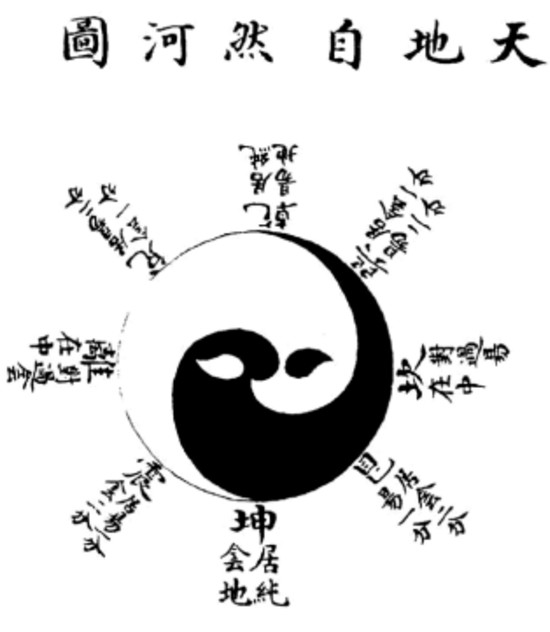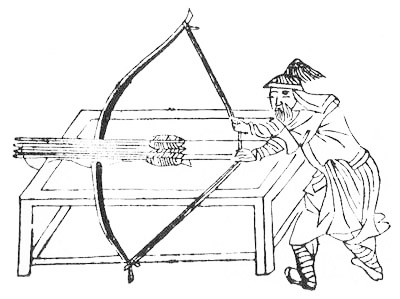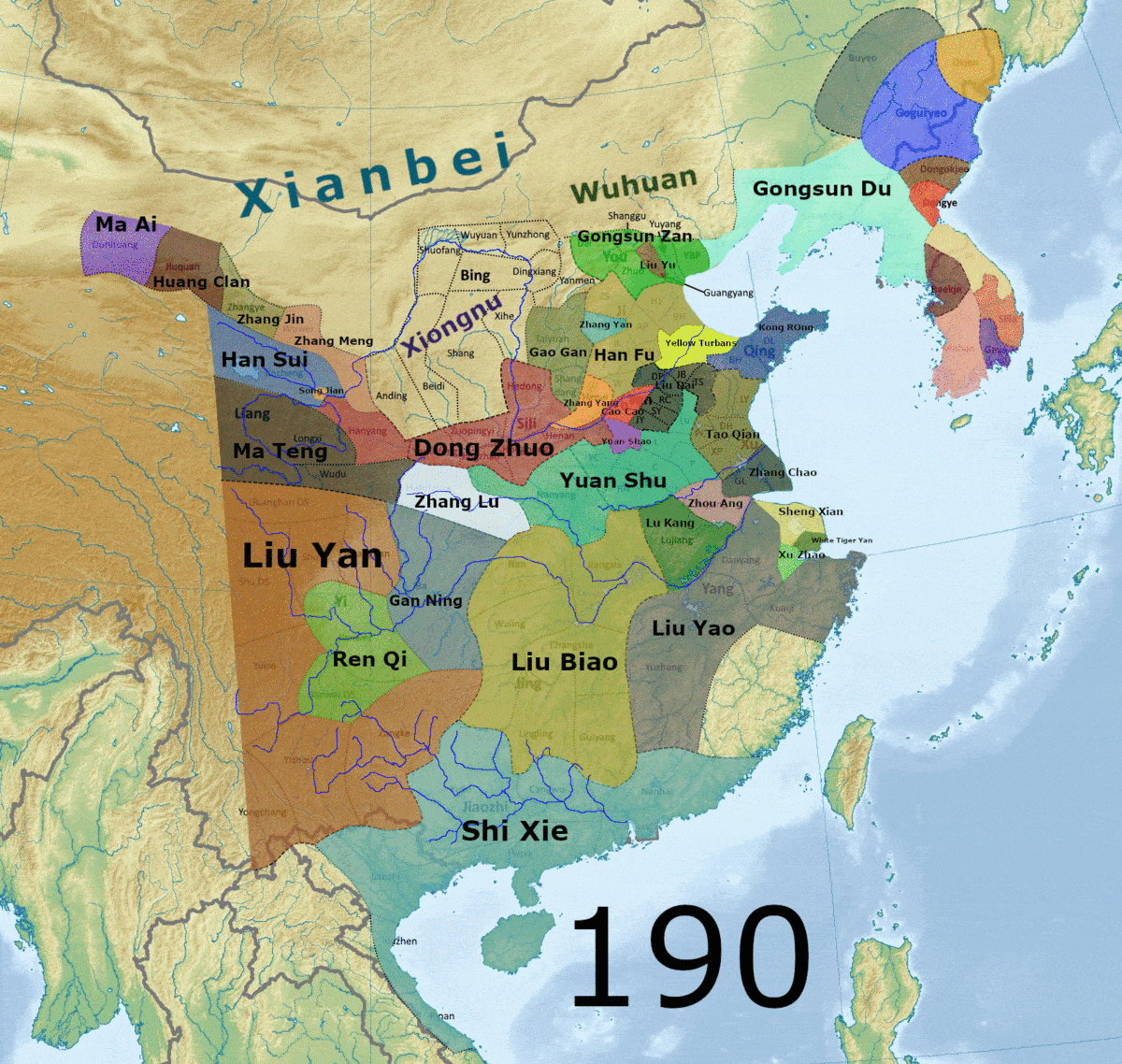|
Baguazhen
Baguazhen ( Chinese: 八卦陣; pinyin: ''bāguàzhèn)''; lit. 'eight trigrams (military) formation') or Bagua Formation, also known as Jiujun (九軍; lit. 'Nine armies') or Jiugong Baguazhen (九宮八卦陣; pinyin: ''Jiǔgōng bāguàzhèn''; lit. 'Nine palaces, eight trigrams formation') or Bazhen (八陣; lit. 'eight formations') is a military formation originating from China, based on the principles of ''Bagua'' or ''Qimen Dunjia''. The formation has been used throughout Chinese history and attributed to many famous military figures, most notably to Zhuge Liang. In Song dynasty sources, the ''bazhen'' is also alternatively known as ''jiujunzhen'' (九軍陣, lit. 'nine-army formation'). Overview Generally, the ''bazhen'' is a mass military formation, where the army are divided into eight units deployed at cardinal and ordinal directions, often surrounding a central commanding unit. The exact composition and the names of the regiments in the ''baguazhen'' varies in ... [...More Info...] [...Related Items...] OR: [Wikipedia] [Google] [Baidu] |
Zhuge Liang
Zhuge Liang () (181September or October 234), also commonly known by his courtesy name Kongming, was a Chinese statesman, strategist, and inventor who lived through the End of the Han dynasty, end of the Eastern Han dynasty ( 184–220) and the early Three Kingdoms period (220–280) of China. During the Three Kingdoms period, he served as the Chancellor (China), Imperial Chancellor (or Prime Minister) of the state of Shu Han (221–263) from its founding in 221 and later as regent from 223 until his death in September or October 234. He is recognised as the most accomplished strategist of his era. His reputation as an intelligent and cultured scholar grew even while he was living in relative seclusion, earning him the nickname "Wolong" or "Fulong" (both meaning "Sleeping Dragon"). Zhuge Liang's methods of administration drew both from Legalism (Chinese philosophy), Legalism as well as Confucianism. He was critical of the Legalist thought of Shang Yang, and advocated benevole ... [...More Info...] [...Related Items...] OR: [Wikipedia] [Google] [Baidu] |
Bagua
The ''bagua'' ( zh, c=八卦, p=bāguà, l=eight trigrams) is a set of symbols from China intended to illustrate the nature of reality as being composed of mutually opposing forces reinforcing one another. ''Bagua'' is a group of trigrams—composed of three lines, each either "broken" or "unbroken", which represent yin and yang, respectively. Each line having two possible states allows for a total of 23 = 8 trigrams, whose early enumeration and characterization in China has had an effect on the history of Chinese philosophy and cosmology. The trigrams are related to the divination practice as described within the ''I Ching'' and practiced as part of the Shang and Zhou state religion, as well as with the concepts of '' taiji'' and the five elements within traditional Chinese metaphysics. The trigrams have correspondences in astronomy, divination, meditation, astrology, geography, geomancy (feng shui), anatomy, decorative arts, the family, martial arts (particularly tai chi an ... [...More Info...] [...Related Items...] OR: [Wikipedia] [Google] [Baidu] |
Ma Long (Jin Dynasty)
Ma Long ( 251–290), courtesy name Xiaoxing was a politician and military general of Cao Wei during the Three Kingdoms The Three Kingdoms of Cao Wei, Shu Han, and Eastern Wu dominated China from AD 220 to 280 following the end of the Han dynasty. This period was preceded by the Eastern Han dynasty and followed by the Jin dynasty (266–420), Western Jin dyna ... period and Jin dynasty (266–420), Western Jin dynasty period. He was most known for ending Tufa Shujineng's Rebellion in early 280, during which he employed unorthodox tactics to defeat the rebels. After the end of the Three Kingdoms, he was made Prefect of Xiping Commandery (西平郡; around present-day Xining, Qinghai) and served the office for more than ten years. He maintained peace in Liang Province, Liang province and was popular among the non-Han people living there. Early career Ma Long was a native of Pinglu County (平陸縣; in present-day Wenshang County, Shandong), Dongping State (東平國). Fr ... [...More Info...] [...Related Items...] OR: [Wikipedia] [Google] [Baidu] |
Sun Bin's Art Of War
''Sun Bin's Art of War'' is a Chinese treatise on military strategy that dates back to the Warring States period, an era of political instability and warfare in ancient China. It is credited to Sun Bin, who was believed to be a descendant of the famous military strategist Sun Tzu. Sun Bin served as a military advisor in the Qi state during this period and is said to have authored this piece on military tactics. Historical records from the Han dynasty suggest that the original text of Sun Bin's Art of War comprised 89 chapters, accompanied by four volumes of illustrations. Unfortunately, the original work was lost by the end of the Eastern Han dynasty. While Sun Bin's ''Art of War'' and Sun Tzu's ''The Art of War'' share a similar name, they are distinct works by different authors. Rediscovery In April 1972, bamboo parchments of both Sun Tzu's and Sun Bin's works were unearthed in the Yinque Hills (Linyi city, Shandong province). Due to natural deterioration, some of the ... [...More Info...] [...Related Items...] OR: [Wikipedia] [Google] [Baidu] |
Wubei Zhi
The ''Wubei Zhi'' (; ''Treatise on Armament Technology'' or ''Records of Armaments and Military Provisions''), also commonly known by its Japanese translated name Bubishi, is a military book in Chinese history. It was compiled in 1621 by (茅元儀 ''Máo Yuányí''; 1594–1640?), an officer of waterborne troops in the Ming dynasty. The ''Wubei Zhi'' contains 240 volumes, 10,405 pages, and more than 200,000 Chinese characters. Structure ''Wubei Zhi'' consists of five sections, "Bing Jue Ping", "Zhan Lue Kao", "Zhen Lian Zhi", "Jun Zi Sheng", and "Zhan Du Zai". *"Bing Jue Ping" (Commentary on Military Formulae) Containing 18 chapters, this section includes military theories from significant figures including, but not limited to, Sun Tzu. Some of these theories date back to the last years of the Eastern Zhou dynasty, more than 1,800 years before the editor. *"Zhan Lue Kao" (Consideration of Tactics) This section consists of 31 chapters, and describes more than 600 specifi ... [...More Info...] [...Related Items...] OR: [Wikipedia] [Google] [Baidu] |
Northern Wei
Wei (), known in historiography as the Northern Wei ( zh, c=北魏, p=Běi Wèi), Tuoba Wei ( zh, c=拓跋魏, p=Tuòbá Wèi), Yuan Wei ( zh, c=元魏, p=Yuán Wèi) and Later Wei ( zh, t=後魏, p=Hòu Wèi), was an Dynasties of China, imperial dynasty of China ruled by the Tuoba (Tabgach) clan of the Xianbei. The first of the Northern and Southern dynasties#Northern dynasties, Northern dynasties, it ruled northern China from 386 to 535 during the period of the Northern and Southern dynasties. Described as "part of an era of political turbulence and intense social and cultural change", the Northern Wei dynasty is particularly noted for unifying northern China in 439, bringing an end to the chaotic Sixteen Kingdoms period, and strengthening imperial control over the rural landscape via reforms in 485. This was also a period of introduced foreign ideas, such as Buddhism, which became firmly established. The Northern Wei was referred to as "Plaited Barbarians" (索虜; ''suǒlǔ ... [...More Info...] [...Related Items...] OR: [Wikipedia] [Google] [Baidu] |
Shu Han
Han (; 221–263), known in historiography as Shu Han ( ) or Ji Han ( "Junior Han"), or often shortened to Shu ( zh, t=蜀, p=Shǔ; Sichuanese Pinyin: ''Su'' < Middle Chinese: *''źjowk'' < Eastern Han Chinese: *''dźok''), was a Dynasties in Chinese history, dynastic state of China and one of the three major states that competed for supremacy over China in the Three Kingdoms period. The state was based in the area around present-day Hanzhong, Sichuan, Chongqing, Yunnan, Guizhou, and north Guangxi, an area historically referred to as "Shu" based on the name of the past Shu (kingdom), ancient kingdom of Shu, which also occupied this approximate geographical area. Its core territory also coincided with Emperor Gaozu of Han, Liu Bang's Emperor Gaozu of Han#King of Han, Kingdom of Han, the precursor of the Han dynasty. Shu Han's founder, Liu Bei (Emperor Zhaolie), had named his dynasty "Han", as he considered it a rump state of the Han dynasty and thus the legitimate successor to ... [...More Info...] [...Related Items...] OR: [Wikipedia] [Google] [Baidu] |
Tufa Shujineng's Rebellion
Tufa Shujineng's Rebellion, also known as the Qin and Liang Provinces Rebellion ( Chinese: 秦涼之變), was a tribal rebellion against the Western Jin dynasty from July 270 to early 280 during the Three Kingdoms period. It was led by the Xianbei chieftain Tufa Shujineng, who was joined by several tribal ethnic groups such as the Qiang and Di living in northwestern China. The rebellion lasted nearly a decade and reached its peak in 279 when rebel forces captured Liang province. However, the end of that same year would also see its end as Jin forces decisively defeated Shujineng and pacified the tribes. Background During the Western Jin dynasty, northwestern China was home to various tribal ethnic groups. The neighbouring Qiang people to the west had been migrating inwards into the Longxi and Guanzhong regions as early as the Western Han dynasty, where they would often rebel due to oppressive policies by the local Han governors. The Di people, despite their relatively sta ... [...More Info...] [...Related Items...] OR: [Wikipedia] [Google] [Baidu] |
Book Of Jin
The ''Book of Jin'' is an official Chinese historical text covering the history of the Jin dynasty (266–420), Jin dynasty from 266 to 420. It was compiled in 648 by a number of officials commissioned by the imperial court of the Tang dynasty, with Chancellor (China), chancellor Fang Xuanling as the lead editor, drawing mostly from official documents left from earlier archives. A few essays in volumes 1, 3, 54 and 80 were composed by the Tang dynasty's Emperor Taizong of Tang, Emperor Taizong himself. However, the contents of the ''Book of Jin'' included not only the history of the Jin dynasty, but also that of the Sixteen Kingdoms period, which was contemporaneous with the Eastern Jin dynasty. Compilation Over 20 histories of the Jin had been written during the Jin era itself and the subsequent Northern and Southern dynasties, of which Eighteen History Books of Jin, 18 were still extant at the beginning of the Tang dynasty. Yet Emperor Taizong of Tang, Emperor Taizong deemed t ... [...More Info...] [...Related Items...] OR: [Wikipedia] [Google] [Baidu] |
Book Of Wei
The ''Book of Wei'', also known by its Chinese name as the ''Wei Shu'', is a classic Chinese historical text compiled by Wei Shou from 551 to 554, and is an important text describing the history of the Northern Wei and Eastern Wei from 386 to 550. Widely regarded as the official and authoritative source historical text for that period, it is one of the Twenty-Four Histories. Origin and reception The Northern Wei dynasty was established in 386 by the Tuoba clan. The greatest accomplishment of the Northern Wei dynasty was the unification of Northern China in 439. An internal struggle resulted in a split which introduced the Eastern Wei and the Western Wei. The Eastern Wei dynasty was short-lived. Established in 534, several military campaigns were fought to try and reunite east and west but each failed. In 550, the area was taken over by Gao Yang who founded his own dynasty which he names the Northern Qi. It is the history of these two dynasties that Wei Shou attempted to r ... [...More Info...] [...Related Items...] OR: [Wikipedia] [Google] [Baidu] |
Three Kingdoms
The Three Kingdoms of Cao Wei, Shu Han, and Eastern Wu dominated China from AD 220 to 280 following the end of the Han dynasty. This period was preceded by the Eastern Han dynasty and followed by the Jin dynasty (266–420), Western Jin dynasty. Academically, the periodisation begins with the establishment of Cao Wei in 220 and ends with the conquest of Wu by Jin in 280. The period immediately preceding the Three Kingdoms, from 184 to 220, was marked by chaotic infighting among warlords across China as Han authority collapsed. The period from 220 to 263 was marked by a comparatively stable arrangement between Cao Wei, Shu Han, and Eastern Wu. This stability broke down with the conquest of Shu by Wei in 263, followed by the usurpation of Cao Wei by Jin in 266 and ultimately the conquest of Wu by Jin in 280. The Three Kingdoms period including the collapse of the Han was one of the most dangerous in Chinese history due to multiple plagues, widespread famines, and civil war. A n ... [...More Info...] [...Related Items...] OR: [Wikipedia] [Google] [Baidu] |






